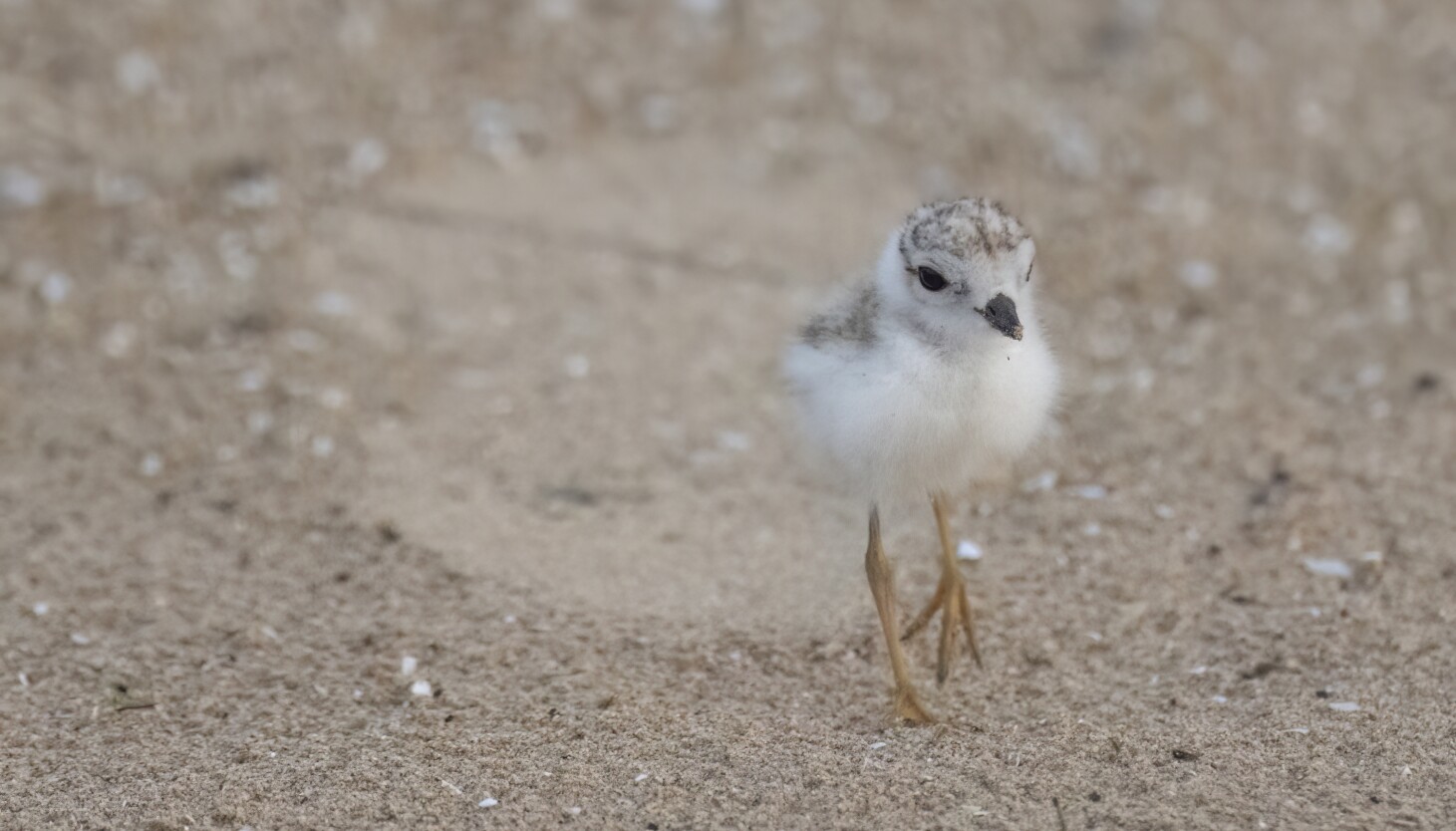Ever since Monty and Rose captured the hearts of Chicagoans in 2019, piping plovers have become nearly as beloved a part of summer in the city as block parties and Italian ice.
That made it all the more devastating when three piping plover chicks died in a span of five days last week.
The causes of their deaths haven’t been determined, but wildlife experts are exploring the ways the chicks could have been killed and how the surviving birds can be kept safe.
“Juvenile birds have a hard time making it to adulthood in the wild,” said Matthew Allender, a wildlife veterinarian with Brookfield Chicago Zoo and University of Illinois. “But the fact that we have only one nest of piping plover chicks on Montrose Beach makes it of great interest.”
The chicks, hardly two weeks old, were the offspring of Imani and Sea Rocket and days away from being named. Their only surviving chick appears healthy.
Chicago birders and wildlife experts are fiercely protective of the piping plovers, which migrate to the Montrose Point Bird Sanctuary every spring. Safety measures are used to keep the birds safe, but there’s only so much that can be controlled.
Experts explained to the Sun-Times that several tests are being run to determine what killed the chicks, including a necropsy, the animal version of an autopsy.
“The piping plover population in the Great Lakes faces an extensive list of mortality risks,” said Brad Semel, an endangered species specialist with the Illinois Department of Natural Resources.
Those risks could be predators like larger birds or vermin, humans and their all-terrain vehicles and off-leash dogs, avian diseases and bacterial and fungal infections. Plovers also face environmental risks like severe weather, dramatic temperature changes or the availability of food and shelter.
The first chick was presumed dead July 10 after it went missing. Volunteer monitors later found the body of the chick on the beach with a growth on its neck. It was taken to Lincoln Park Zoo for a necropsy.
The next day, a second chick was found lethargic and struggling and was taken to the Lincoln Park Zoo. The creature, showing no signs of injuries or illness, died that night after receiving warmth, oxygen and fluids.
Late Saturday, the third chick was also taken to Lincoln Park Zoo after it was also seen struggling. The chick died overnight.
The culprit for their deaths could be a range of things, Allender said. The chicks were at a critical and vulnerable stage of development and were sensitive to changes to their environment.
“If people and predators aren’t involved, the things that they fight for are getting enough nutrition to survive,” he said.
Last week’s rain, for example, could have washed out their food source. Their immune system is also not fully developed, so certain bacteria and fungi might be deadly to them. They’re also highly susceptible to stress, he added.
It did not surprise Allender that the three chicks all died within a short period of time.
“With plentiful birds, like starlings or sparrows, it’s not uncommon for several or maybe the majority of the chicks to die,” he said. “But with plovers, it’s very much a big deal, or it could be a big deal for their long-term survival.”
Several groups are dedicated to ensuring the plovers’ survival: the volunteer-run organization Chicago Piping Plovers, Forest Preserves of Cook County, the Illinois Department of Natural Resources, the U.S. Fish and Wildlife Service, Great Lakes Piping Plovers Conservation Team, the Brookfield Chicago Zoo and the Lincoln Park Zoo.
The plovers live on a fenced-off section of Montrose Beach. Volunteer monitors keep people away from their habitat, watch out for predators and look out for signs of distress.
“Monitoring efforts at Montrose provide an incredible insight into nearly all aspects of plover activities,” Semel said. “Nowhere else throughout the range of plovers is this intensive level of monitoring achieved, and it gives us a unique perspective on what is happening during plover nesting and chick rearing.”
Volunteers monitor the chicks nearly 15 hours a day, which also helps to rule out causes of death, Semel said.
“It’s really a great collaborative effort,” Allender said, “to really make sure these birds have the best opportunity to survive.”



